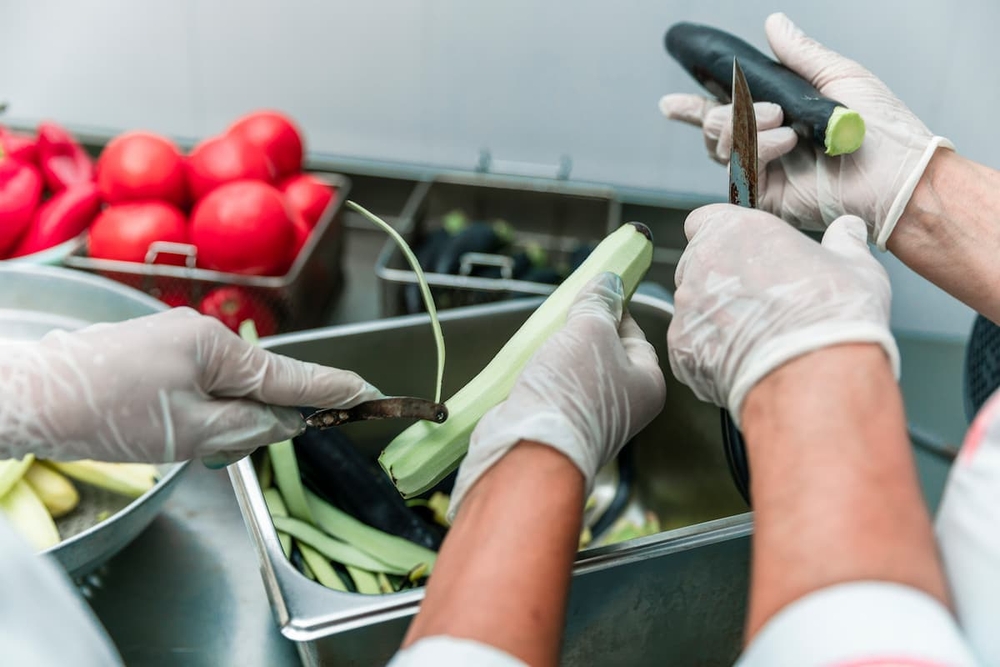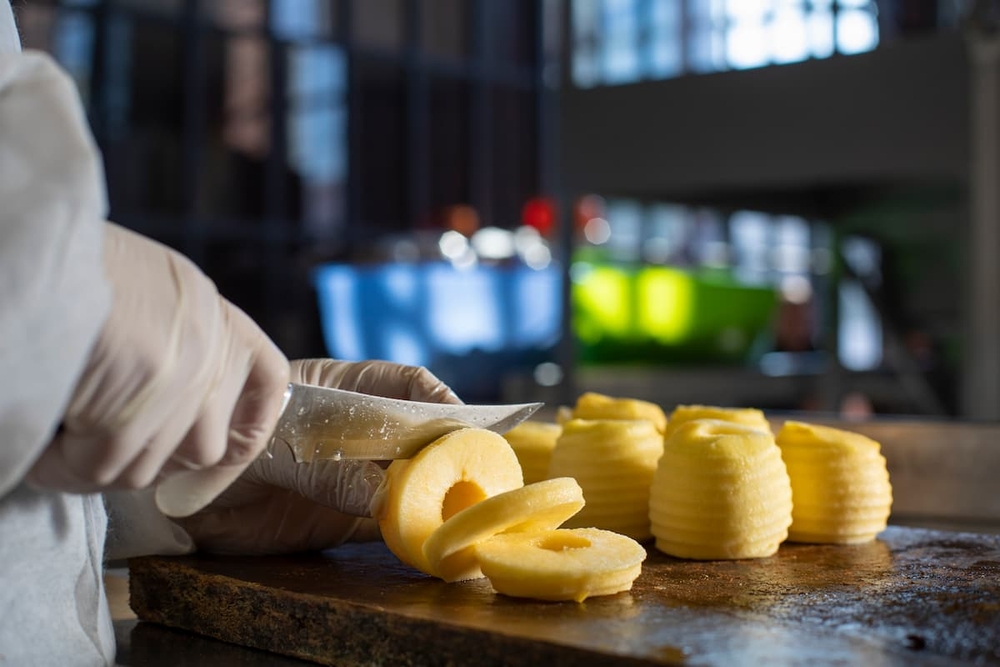Ensuring quality: practical tips for small food manufacturing businesses
Table of Contents
CloudKitchens
How many tacos can be delivered from a 1000sqft restaurant?
The same amount as a 200sqft ghost kitchen.
In the highly regulated world of food manufacturing, consistent product quality isn’t just a business advantage, it’s a necessity. Consumers expect uniform taste, texture, and safety in every bite, and regulatory agencies enforce strict compliance with food safety standards.
For small food manufacturing businesses, these expectations can pose significant challenges due to limited resources and staffing. However, by implementing smart quality control (QC) practices tailored to their scale, small producers can build trust, ensure repeat business, and avoid costly recalls.
This guide walks through essential QC tips to help small food businesses maintain quality without compromising efficiency or affordability.
Understanding quality control in food manufacturing
Quality control (QC) in food manufacturing refers to the practices and procedures implemented to ensure that food products consistently meet safety, quality, and regulatory requirements.
For small manufacturers, QC is about more than just catching defects, it’s a system for preventing issues before they arise and ensuring customer satisfaction from the first unit to the last.
QC in food production typically involves:
- Monitoring raw materials for purity, freshness, and consistency;
- Controlling processing variables like time, temperature, and pH;
- Evaluating packaging integrity and labeling accuracy;
- Conducting sensory evaluations (taste, smell, appearance);
- Implementing microbial testing (e.g., salmonella, Listeria, total plate count).
Quality control is a continuous process that starts with sourcing and extends all the way to post-market feedback. Done well, it forms the backbone of a sustainable, trusted food brand.
Key quality control points in food manufacturing
A critical part of any QC system is identifying key checkpoints where quality can be assured or improved. These are known as Critical Control Points (CCPs), and they form the core of a HACCP (Hazard Analysis and Critical Control Points) plan.
Here are key QC points commonly found in small food manufacturing:
1. Raw ingredient inspection: Inspect for signs of spoilage, damage, or contamination. Maintain supplier approval lists and test high-risk ingredients regularly.
2. Preparation and processing: Monitor cooking times and temperatures to ensure safety and consistency. Use calibrated thermometers and data loggers.
3. Equipment sanitation: Poor cleaning practices can lead to cross-contamination. Implement a Sanitation Standard Operating Procedure (SSOP) schedule.
4. Packaging: Check for proper sealing, labeling, and correct use-by dates. Use tamper-evident packaging if needed.
5. Storage and distribution: Ensure that cold chain is maintained for perishable goods. Monitor ambient conditions with temperature probes or IoT sensors.
6. Post-distribution: Collect customer feedback, track complaints, and monitor social media for signs of potential quality issues.
Integrating preventive controls at each of these stages not only protects your product but also demonstrates compliance with the Food Safety Modernization Act (FSMA) or similar regulations depending on your region.
Read more: Tips for Proper Food Delivery Packaging: A Guide for Restaurants
Implementing good manufacturing practices (GMP)
Good Manufacturing Practices (GMP) are a set of standards that ensure products are consistently produced and controlled according to quality benchmarks. For small food manufacturing businesses, implementing GMP is essential for maintaining food safety, meeting regulatory compliance (such as FDA or USDA requirements), and protecting brand reputation. Here’s how small operations can effectively apply GMP principles in practice:
- Maintaining clean and hygienic manufacturing areas;
- Controlling environmental conditions to prevent contamination;
- Ensuring proper training and hygiene of personnel;
- Documenting all processes and procedures.
1. Regular inspections and testing
Conducting routine inspections and product testing is the backbone of a robust quality control program. For small food manufacturers, this means not only monitoring incoming raw materials but also verifying process controls and final products before release.
- Raw materials: Establish acceptance criteria for color, odor, appearance, and microbial limits. Insist on Certificates of Analysis (COAs) from suppliers and perform spot checks.
- In-process checks: Monitor temperature, pH, weight, and packaging integrity during production.
- Finished products: Conduct microbiological tests (e.g., for Listeria, E. coli, Salmonella), chemical residue analysis, and allergen testing using lateral flow assays or PCR-based methods.
- Sensory testing: Perform panel-based taste, smell, and texture evaluations to ensure each batch meets expectations.
Keep testing frequency proportional to your risk level, products with shorter shelf lives or raw ingredients may need more frequent checks.
2. Documentation and record-keeping
Comprehensive documentation is essential not only for traceability and accountability but also to identify and address recurring quality issues.
- Record all inspection results, deviations, corrective actions, and test reports.
- Maintain batch production logs, supplier audits, cleaning logs, and staff training records.
- Implement a standardized system (digital or paper-based) to ensure consistency.
- Store records securely and retain them for the period required by local regulations (e.g., 1-3 years depending on region and product type).
This data becomes invaluable during audits and can reveal trends that allow for preemptive problem-solving, such as recurring equipment failures or spoilage issues tied to specific suppliers.
Read more: Building a reliable supply chain for your production kitchen
3. Staff training and involvement
Employees are your first line of defense when it comes to quality assurance. A well-trained, quality-minded team can prevent issues before they occur.
- Implement onboarding programs focused on food safety, sanitation, and SOPs.
- Offer ongoing training modules to cover GMP updates, allergen handling, and equipment operation.
- Include visual aids and checklists on the production floor to reinforce procedures.
- Encourage team feedback and reward staff who identify or correct potential quality issues.
A culture of quality ensures that everyone, from line cooks to supervisors, understands the “why” behind each protocol, which increases adherence and reduces errors.
Read more: The ultimate guide to training your kitchen staff for speed and accuracy
4. Utilizing technology for quality control
Digital tools and smart systems can streamline QC processes, reduce manual error, and improve traceability.
- Use digital HACCP systems that automate logging of critical control points (e.g., fridge temps, cooking times).
- Install inline sensors for weight, pH, and metal detection to catch defects in real time.
- Adopt software platforms for supply chain traceability, giving you full visibility into ingredient origins, batch tracking, and expiry dates.
- Utilize cloud-based dashboards for real-time monitoring and alerts when parameters fall out of spec.
Read more: Restaurant Technology: Boost your business with the best technology trends
Developing a recall plan
Even with the best systems in place, unforeseen issues may necessitate a recall. An effective recall plan mitigates risk and shows regulators and customers that your business takes safety seriously.
- Define clear roles and responsibilities for recall team members (QA, operations, logistics, customer service).
- Maintain an up-to-date contact list of customers, distributors, and regulatory bodies.
- Use lot codes and traceability software to quickly identify and isolate affected batches.
- Prepare templates for recall notices and press releases to streamline communication.
- Conduct mock recalls annually to test readiness and improve procedures.
A well-prepared recall protocol not only limits consumer exposure but also demonstrates professionalism and commitment to food safety, essential for building long-term customer trust.
Read more: How to handle customer complaints and turn negative reviews into positive experiences
Connecting with CloudKitchens
CloudKitchens provides infrastructure and support that align with effective quality control practices. By offering access to shared kitchen spaces equipped with modern facilities, CloudKitchens enables small food manufacturers to maintain high hygiene and safety standards. Our platform also facilitates streamlined operations, allowing businesses to focus on product quality and customer satisfaction.
Implementing these quality control tips can help small food manufacturing businesses ensure product consistency, meet regulatory requirements, and build customer trust. Partnering with CloudKitchens can further support these efforts by providing the necessary resources and infrastructure. Check all our solutions right now!
DISCLAIMER: This information is provided for general informational purposes only and the content does not constitute an endorsement. CloudKitchens does not warrant the accuracy or completeness of any information, text, images/graphics, links, or other content contained within the blog content. We recommend that you consult with financial, legal, and business professionals for advice specific to your situation.
More insights & stories
There’s more where that came from.
Get in the know and check out our additional insights


